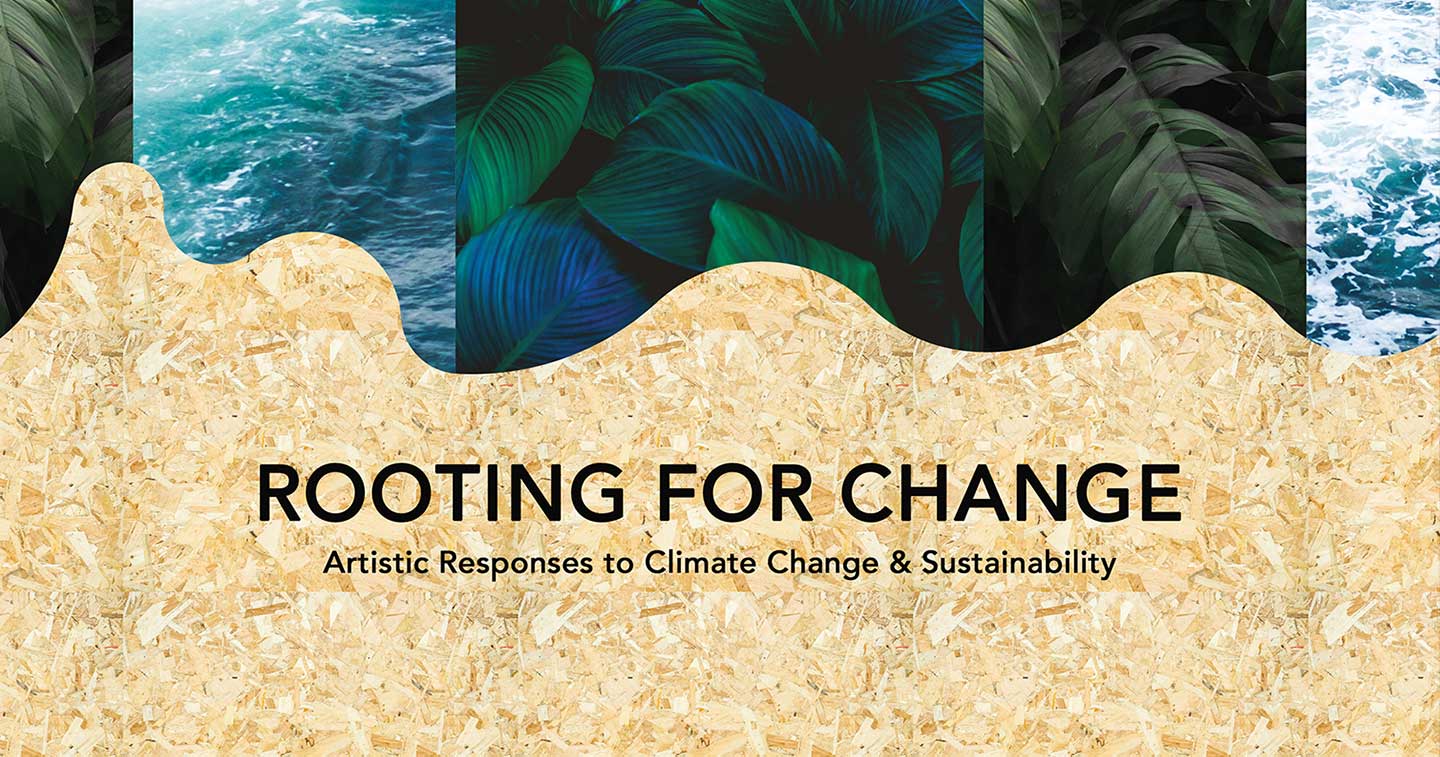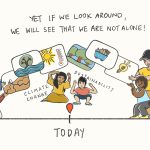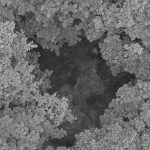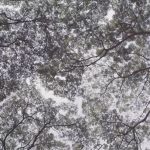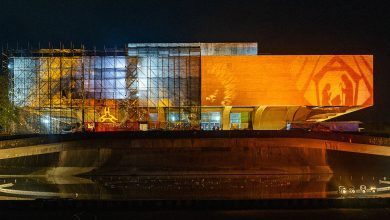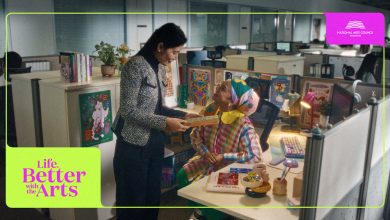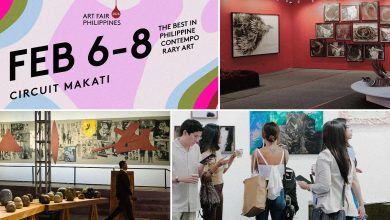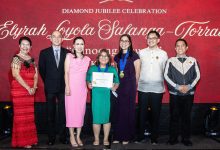SINGAPORE — How is climate change affecting Singapore and the region and how can our societies build a more sustainable future? In the lead-up to Earth Day that is commemorated globally on April 22 every year, the National Museum of Singapore and the Maybank Foundation launched three original video artworks on 20 April, selected from an Open Call commissioning series held between April to May 2021. The series serves to showcase creative and contemporary responses to the National Museum’s collection, making it more accessible to the public while engaging them on contemporary issues. This two-part Open Call commissioning series is part of a three-year Memorandum of Understanding (MOU) signed between both organisations in 2019 to promote the arts, culture and heritage of Southeast Asia, while responding to the current issues of today and making a positive impact on the community.
Titled Rooting for Change: Artistic Responses to Climate Change and Sustainability, the first series comprises three video artworks that will be showcased on the National Museum’s LED Wall. The artworks address the theme of climate change and sustainability in a mix of artistic styles, originality and innovativeness, by artists and creatives with different artistic practices.
Indefinite Waters by artist collective DASSAD, whose experimental video depicts rising sea levels and how it slowly swallows up a litter of communication devices from across the ages to demonstrate the paradoxical relationship that humans have with the urgency of our climate futures.
Juxtaposing past images of the Singapore landscape with current day footage, Second Chance by Robert Zhao is a poetic meditation on the historical and environmental richness of Singapore’s secondary forests that sheds light on models of resilience, compromise and co-existence with other species.
Choosing Today for our Tomorrows by Ong Wei Ting recognises environmental sustainability as a key issue that today’s generation is grappling with, and through an animation inspired by a 1990s cartoon style, encourages visitors young and old to take heart in building a more sustainable future.
More details on the selected artworks can be found in Annex A.
Chung May Khuen, Director of the National Museum of Singapore, said, “Climate change and sustainability are pressing global concerns, which the National Museum has presented and discussed in previous exhibitions and programmes, and we will continue creating opportunities to encourage these important conversations with our visitors. Through this meaningful collaboration with the Maybank Foundation, we were able to engage with our local artists and creatives to continue exploring these topics and co-create with them works that offer fresh perspectives on the environmental issues of today, while drawing inspiration from our museum’s collection.”
Rooting for Change will be on display until 31 July 2022. In culturally-rich Southeast Asia, where modernity and urbanisation intersect in complex ways with tradition and heritage, the National Museum and the Maybank Foundation hope to continue encouraging active contributions and co-creation with artists and creatives, to explore new and exciting ways in presenting the history and heritage of Singapore and the region, while drawing connections to the National Museum’s collection. Concurrently, the National Museum and the Maybank Foundation are conducting the second Open Call exercise from 19 April 2022 to 18 May 2022 that is themed around Intangible Cultural Heritage (ICH). The newly commissioned works are expected to be showcased in end 2022. Applications to the open call can be made here. More details of the Open Call can be found in Annex B.
“Our collaboration with the National Museum of Singapore allows us the opportunity to bring the arts, culture and heritage of Singapore and Southeast Asia into focus, while supporting artists from this region. The artworks featured in Rooting for Change present thought-provoking perspectives, and we are excited to launch the second Open Call, to encourage more artists to step forward and create meaningful works that can ignite discussions on the issues that matter most to us,” said Mr. Khairudin bin Abdul Rahman, CEO of Maybank Foundation.
ANNEX A
Indefinite Waters by DASSAD
Featuring telecommunication and technological devices inspired by Singapore’s National Collection, Indefinite Waters collapses the past, present and future onto a dystopian landscape of consumer products. It is an experimental video reflecting on the paradoxical relationship that humans have with the urgency of our climate futures. The futility of measuring an ever-changing shoreline in a world threatened by rising sea levels parallels the unceasing human need to define and quantise an immeasurable and inevitable change in our daily lives.
Second Chance by Robert Zhao
An overlooked feature of Singapore’s landscape, secondary forests are forests that have sprung up over previously developed plots of land. They make up the bulk of Singapore’s spontaneous vegetation, which covers more than half of its existing greenery. However, they are often undervalued ecologically, despite research on new ways in which secondary forests can help with climate change and biodiversity loss.
A poetic meditation on the historical and environmental richness of these forests, Second Chance (2022) features footage of secondary forests (on sites of abandoned plantations and kampongs) as well as wildlife captured by motion-sensitive cameras placed in these areas. In a time of climate exigencies, the work is a clarion call to greater conservation of these flourishing parcels of land, from which we can deserve models of resilience, compromise and co-existence with other species.
Choosing Today for our Tomorrows by Ong Wei Ting
Climate change and sustainability are two key issues that today’s generation is grappling with. While it does feel overwhelming at times, we should take heart that every decision we make, no matter how small, will make a difference for our environment. We can learn from our past, but it is our choices today that will impact our future.
The animation you see is inspired by cartoons from the 1990s that used transitions between illustrations, known as “picture-mation”, which is different from frame-by-frame animation. This style is itself inspired by audiobooks.
To differentiate the themes in this animation, the artist took a leaf from the art style of risograph printed storybooks she read as a child, in which the artwork is in hues of the same colour. The soundtrack was written by Kevin MacLeod from filmmusic.io and Zapsplat.com.
Let’s try our best to build a better future together!
ANNEX B
Details of Second Open Call 2022: Intangible Cultural Heritage
At the end of 2020, Hawker Culture in Singapore was inscribed to the UNESCO Representative List of the Intangible Cultural Heritage of Humanity. This has raised the profile not just of hawker culture as a practice and tradition worth recognising and safeguarding for future generations, but the broader notion of Intangible Cultural Heritage (ICH) itself, which encompasses traditions, expressions, rituals, knowledge and skills that are practiced and passed on from generation to generation.
This is of special interest in the culturally rich context of Singapore and Southeast Asia, where modernity and urbanisation intersect in complex ways with tradition and heritage. In particular, the increasing drive to safeguard ICH is met with ongoing movements to contemporarise and adapt to current contexts. In relation to this, it is worth considering the concurrent activity of collecting of tangible objects – whether artwork or historical artefacts – and the roles of collectors and museums in doing so as part of the larger effort in generating greater awareness and appreciation of ICH.
Artists could consider an exploration of one or more of the following categories or examples*:
- Traditional performing art forms – such as Indian dance forms, Malay dance forms, Dikir Barat, Bangsawan, Wayang Kulit, Chinese Opera, Wayang Peranakan and Dondang Sayang
- Food heritage – such as Hawker Culture, the making of Popiah, Kueh and Yusheng
- Social practices, rituals and festive events – such as Silat, Chingay, Thaipusam and Easter
- Traditional craftsmanship – such as Peranakan beadwork and embroidery, the making of Soya Sauce, Flower Garlands, Rattan Products, Cheongsam tailoring, Kavadi, making and repair of Malay drums
- Knowledge concerning nature and universe – such as Traditional Chinese medicine, Traditional Malay medicine, Ayurveda, Birthing Traditions and Orchid Cultivation
*Please note that the list above is not exhaustive.
The artistic interpretation could possibly capture the sensorial aspects (such as sights and sounds) of one or various examples of ICH in Singapore and/or Southeast Asia inspired by materials from the National Collection, and in doing so, highlight the cultural and historical connections between Singapore and the Southeast Asian region. The response should take into consideration the scale and format of the LED Wall, which allows viewers to experience ICH in an immersive manner.
More information on the categories of ICH and their diverse elements that are present and practised in multicultural Singapore can be found on the ICH Inventory at https://www.roots.gov.sg/ich-landing.
Proposals will be evaluated according to the following:
I. Merit of proposal (40%)
- Demonstrate creative and artistic responses to the theme of Intangible Cultural Heritage.
- Clarity of proposal and concept for the proposed video-based artwork.
- Originality and innovativeness of content for the proposed video-based artwork.
- Quality of considerations taken in referencing, featuring and responding to NMS’ collection to the proposed video-based artwork; i.e., concept, research, and discourse.
- The relevant use of the museum’s collection and its representation to the content of the proposed video-based artwork.
- Proposal should clearly indicate the format/type of video used for the video-based artwork; i.e., animation, short-film, documentary, etc.
II. Impact of proposal (30%)
- Proposal for the video-based artwork should demonstrate strength and quality.
- The proposed video-based artwork should stimulate engagement with local public, international visitors, and museum professionals.
- The proposed video-based artwork should facilitate access and knowledge of the museum’s collection to the audiences.
- The proposed video-based artwork should of quality and demonstrate potential to be presented in other local and/or international venues.
III. Project planning and management (30%)
- Applicant’s expertise and experience in the creative field and the necessary support to undertake and complete the proposed video-based artwork project.
- Demonstrate a realistic and detailed breakdown of timeline and schedule of proposed project.
- Track record of the individual or collective will be taken into consideration.
- Clear description on how the project is to be developed and implemented.

